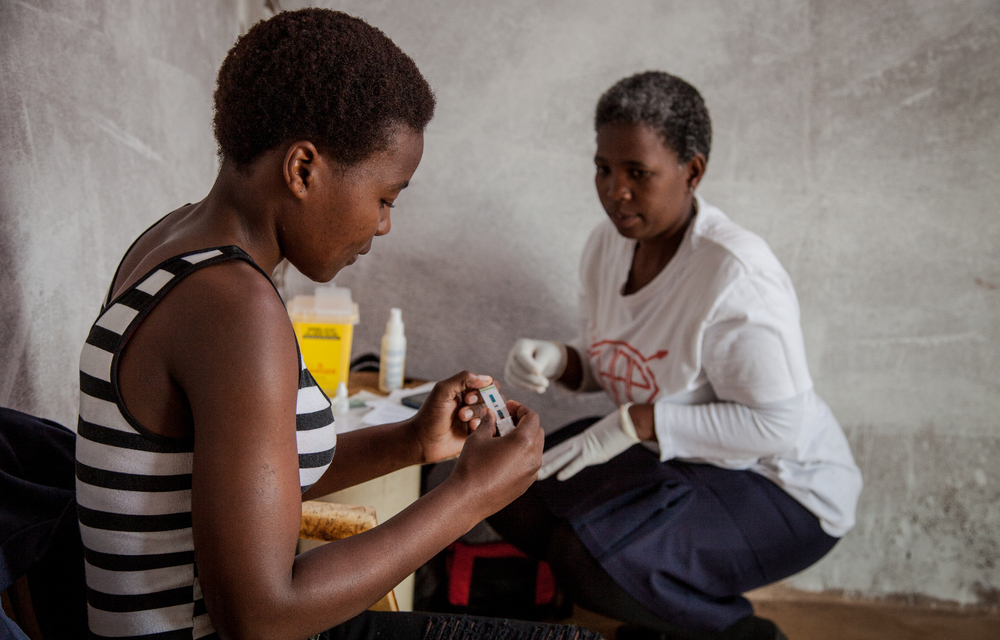How one rural community proved the naysayers wrong and met UNAids’ ambitious 90-90-90 targets — and a year early, in fact.
Eshowe, a small community about 100 kilometres outside of Richards Bay, has likely become the first area in the country to test and treat enough people for HIV to drastically reduce new infections, a study released today at the South African Aids conference in Durban found. This is how.
Condoms. For decades, this is what HIV prevention looked like for most people. That is until 2011 when the first large-scale research confirmed what scientists had been thinking for years: That the drugs we used to treat the virus could also prevent its spread.
The nine-country study, which featured sites in Johannesburg, involved almost 1800 couples in which one partner was HIV positive and the other negative. Published in The New England Medical Journal, the study found that when people started treatment early, they reduced the risk of passing the virus to their partner by 96%.
It became official: Treatment could be prevention.
And in 2014, UNAids figured out what it would take to let the world capitalise on this and take a step towards “ending” Aids 2020: To do this, we’d have to ensure that 90% of people know their HIV status and 90% of those who do on are on treatment. Of those who are on antiretrovirals (ARVs), 90% has to be doing well enough on medication that the level of the virus in their blood is so low that they are no longer at risk of transmitting the virus — also known as being virally suppressed.
But experts in a 2017 comment piece in the journal BMC Global Health argued it could never be done: The world didn’t have the money to afford it or the flow of ARVs to sustain this — least of all in countries that needed it most.
This week, however, communities in and around Eshowe proved them wrong.
And a year ahead of schedule.
[LISTEN] Could an implant the size of a match stick save teenagers from HIV?
Since 2011, the international humanitarian organisation Doctors Without Borders (MSF) has been working with the KwaZulu-Natal health department in the Eshowe area in hopes of showing that large numbers of people on treatment, and who are as a result not infectious, could reduce the new HIV cases seen in the communities. So the duo overhauled everything from where people tested for the virus to how they got their medication.
Today, MSF announced that the communities have surpassed UNAids’ 90-90-90 goals and — if preliminary data are right — managed to chart an 83% reduction in the rate of new HIV cases in the community between 2013 and 2018.
Ninety percent of people between the ages of 15 to 49 know their HIV statuses, MSF’s latest survey shows. But moreover, about 95% of those who know their status, are on treatment and incapable of transmitting the virus.
The study, conducted among more than 3000 people, also found that rates of new infections among young women between the ages of 15 and 29 fell by more than half. But MSF’s medical focal point for the project, Liesbet Ohler, says that the number of young women contracting HIV is still high.
The study’s five key findings
- The percentage of people who knew their status grew from 76% to 89% between 2013 and 2018.
- The proportion of people on treatment went from seven in 10 to 94% during the same time.
- Almost 95% of people in areas of Eshowe were MSF works are virally suppressed.
- The annual rate of new infections dropped by about 83%.
- The percentage of HIV-positive people with advanced HIV, or low CD4 counts of less than 200, decreased by half.
MSF’s research didn’t evaluate why exactly new infections fell in Eshowe — whether it was that more people were on treatment and unable to transmit the virus or whether they had access to better information and healthcare after the organisation re-jigged services in consultation with the community.
But it’s one of several studies expected to be presented at the conference that may finally show promising reductions in the number of young women contracting the virus.
Eshowe’s results are particularly reassuring, says Ohler, because if it can happen here, it might just be able to happen anywhere.
The community’s high HIV infection rates makes it one of the 27 worst-hit districts in South Africa, according to the country’s national HIV plan. South Africa’s latest household survey by the Human Sciences Research Council shows KwaZulu-Natal has the highest HIV prevalence rate in the country with almost 30% of people in the province infected with HIV.
“I am saying this with a lot of caution, but I think we are the first community in South Africa that has reached the 90-90-90 targets,” Ohler says. “What makes it so special for us is that Eshowe… is really the epicentre of the HIV epidemic.
“Managing to do this in that place with such high HIV incidence and prevalence is a big achievement.”
Mind the (gender) gap
But MSF’s data also reveals a gender gap. When it came to the first two 90s — how many people knew their status and were on treatment — women outpaced men by almost 10% in some instances.
“I think one of the main things that came out of the study was how the current health system doesn’t really work for men”, Ohler says. “Men are often at work during the time that the clinic is open, then there’s the stigma.”
And much of that stigma is tied to men’s ideas about masculinity.
Ohler explains: “A man that goes to the clinic can be seen as weak so they often delay going to the clinic even when they are sick.”
Studies have long shown that men are less likely to test for HIV early than women for these reasons and many others, including that virtually all women will choose to get tested for HIV during pregnancy to start medication to protect their babies from contracting the virus before, during or after birth.
But to find out how to fix this, MSF asked those who’d know best: Men.
“They want confidentiality. They don’t want long waiting times — they don’t want to sit and queue with the women and the little children in the clinic”, Ohler says. “They’d also feel more comfortable discussing some issues with male healthcare providers.”
As a result, MSF started offering HIV testing before and after work at places like the local taxi rank and in people’s houses through community healthcare workers, who were able to test up to five times more people at home than they were in clinics.
Community health workers were so good at door-to-door testing, in fact, that they eventually had no one left to test at the homes they visited — it was therefore not cost-effective to keep doing this kind of testing. Today, the humanitarian organisation still has community healthcare workers doing testing at clinics but is focusing on providing it in more non-traditional spaces throughout the area like taxi ranks.
And, MSF also found that when they could get men past the first two 90s — in other words, get them tested and onto treatment — they were just as likely as women to stick to their daily ARVs.
Ohler admits that not much of what MSF did over its eight years in Eshowe was new, even taxi rank testing has been done before.
So what was the secret ingredient in Eshowe?
“We really worked with the community,” Ohler says. “We didn’t just want to work for them, we wanted to work with them — what are their priorities, how do they see the challenges and, through imbizos, discussing how to improve that.”
In a recent video about the project, deputy field coordinator Musa Ndlovu said “the key was to understand the community where we were operating — their culture, religion and make sure that we incorporate that in our approach”.
“We make sure that we held workshops with amakhosi [traditional leaders], for them to buy in and talk to their needs. We gave [those meetings] a Zulu name which shows respect to them — Ubuhlakani Bendabuko, which translates as ‘traditional wisdom’.”
The second thing factor behind Eshowe’s success, Ohler says, was working with community health workers and lay counsellors: “We didn’t put 25 medical doctors in place to reach the 90-90-90.”
Community health workers didn’t just do door-to-door testing, they handed out ARVs for patients who were doing well on treatment and opted to pick up their regular medication at places like schools or community halls to avoid the clinic queues. When people weren’t sticking to their medication, it was lay healthcare workers that offered specialised counselling to get people back on their ARVs — something that’s already been incorporated into national HIV guidelines.
A 2018 study by the Medical Research Council found that the country could prevent about 96 000 Aids-related deaths in the next decade if it invested in roughly the same amount of community healthcare workers. South Africa could also prevent round about 344 00 new infections and half a million cases of drug-resistant HIV — not to mention charting gains against TB and childhood diseases.
Ohler concludes: “They were really our ambassadors in the community.”
Laura Lopez Gonzalez is a freelance health journalist and editor. She was Bhekisisa's news editor then deputy editor between 2016 and 2020.




